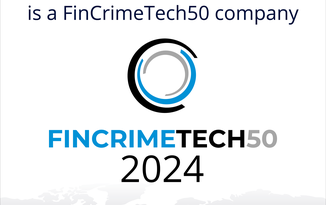Advanced data analytics plays a crucial role in the banking industry as it enables financial institutions to forecast trends, optimise operations, develop innovative products and services, enhance customer satisfaction, and mitigate risks. To achieve long-term success, banks and credit unions need to embrace data democratisation, which enables them to unlock the full potential of their data assets and future-proof their organisations.
Digital banking and data democratisation
The primary objective of digital banking transformation initiatives is to leverage data and insights to improve both customer experiences and organisational performance. However, access to such insights is often fragmented, and deploying solutions can be a challenging process.
According to a majority of financial institutions worldwide, accessing data and insights from multiple sources remains one of the top three obstacles to implementing an effective technology-first strategy.
To overcome this challenge, an increasing number of financial institutions are adopting a data democratisation approach. By providing access to data and insights to a wider array of internal users regardless of their role or seniority, data democratisation helps financial institutions to make better and quicker decisions, improve strategic planning, enhance business operations, and mitigate risk and fraud.
By equipping internal operations and risk teams with better data insights can bring about several benefits, including:
Enhanced efficiency
Cost savings
Compliance
By granting access to a larger number of employees, organisations can maximise their use of data and insights, leading to quicker decision-making, more accurate forecasting, and a reduction in manual processes. These benefits can significantly aid banks and credit unions in adhering to the strict Know Your Customer (KYC) and anti-money laundering (AML) regulations that financial institutions must follow.
Bridging the gap in the credit information market: Improving lending decisions
The FCA (Financial Conduct Authority) has recognised that standard CRAs (Credit Reference Agencies), who build credit files for a range of UK consumers and then sell that data to lenders and financiers to aid in lending decisions, can do more to benefit the decisions of the lender and the options given to the borrower.
The proposed changes to the credit information market include the creation of a more inclusive and responsible industry body to regulate the sharing of personal credit data. Efforts will be made to enhance the quality and scope of credit information, promote innovation and competition through potential modifications to data access arrangements, and ensure timely data reporting.
So what is needed? Faster, better quality underwriting decisions based on richer data sets
Better financial data analysis leads to better lending decisions
Banks have always been able to leverage their clients' transaction data to make informed lending decisions. However, the analysis process has typically been tedious and arduous, relying solely on the bank's knowledge of its customers and their data. As a result, the bank's understanding of a customer's financial behaviour has been limited to the data provided by the bank.
Open Banking has revolutionised this process. Lenders now have access to their customers' transaction data, as well as data from other lenders with whom the customer has a relationship. By combining this data, lenders can gain a more comprehensive understanding of a customer's financial situation, and make more informed lending decisions based on their ability to afford a loan.

Open banking pain points
Homeppl have developed a transactional data insights tool that provides Open banking-like results on every financial document. Whereas Open Banking data is usually only available to lenders should the consumer consent to connect to it, Homeppl’s technology turns all transactions into standardised code. This code can then be extracted, analysed and presented in the forms of graphs, charts and actionable insights that relate directly to the information on a consumer’s bank statement. This solves a significant pain point that many lenders across the UK experience daily: consumers trusting Open banking.
According to research conducted by FinExtra and NTT Data:
84% of people in the UK don't believe Open Banking is safe
72% of consumers believe Open Banking doesn't benefit the consumer
10% of consumers still believe Open Banking gives third parties access to their financial data without consent
Homeppl are huge advocates of Open Banking. It plays a significant role in our financial qualification algorithms. However, lenders and banks would be able to make quicker and better credit decisions in greater volumes if they could build into their approval process a technology-led system that automatically assesses and provides financial insights similar to OB, but for those who still chose to reject the connection.
During a cost of living crisis, this would not only provide the lender with more business but would provide the borrower with fairer access to a range of financial products whilst maintaining their choices and opinions for financial privacy and open banking.
So what sort of categorisation can these financial analysis tools offer lenders? And how does that increase insight and offer a more precise risk assessment?
Well, it will allow lenders more opportunity to quickly get the answers to the following questions they need to ask regarding consumer applications:
How much credit is the consumer currently using and what is their credit utilisation ratio?
What is the consumer's credit history, are they currently repaying any other financial product they may have purchased in the past?
How long has the consumer been employed, is there an identifiable stream of income? Is the consumer’s income from multiple sources? How consistently is the income paid? Monthly, weekly, quarterly?
What is the consumer's debt-to-income ratio, and how much disposable income do they have after accounting for all their expenses and debts?
What percentage of income is spent on essentials?
Does the consumer spend a significant proportion of their income on gambling? Are they withdrawing significant amounts of cash from ATMs?
In a world where credit and loan fraud is rising significantly, as is credit arrears and defaults, these questions are essential when determining risk. In comparison to analysing a long laundry list of transactions, graphs and easy-to-understand numbers and formulas make banking data significantly easier to assess.
How does the system work?
This video explains how through the Fraud Finder API or UI a lender can progress through the following process when it comes to application reviews:
What the tool shows the lender at one quick glance?
Income sources and financial stability
Spending habits when it comes to basic household and living essentials, mortgages or rent
Consumer behaviour patterns of expenditure associated with specific credit risk
If the consumer has any commitment to short-term, high-cost credit such as payday loans. In addition, any monthly repayments to BNPL (Buy Now Pay Later) products
Possibly concerning gambling habits
Transactions that pertain to debt collection or repayment
And many other relevant factors that may impact the consumer's ability to manage credit responsibly.
In conclusion, embracing data democratisation is essential for financial institutions to unlock the full potential of their data assets, future-proof their organizations, and achieve long-term success. The credit information market is being changed by creating a more inclusive and responsible industry body to regulate the sharing of credit information, enhancing the quality and scope of credit information, and simplifying the process for consumers to access their credit files. Lenders can benefit from technology-led solutions, such as transactional data insights tools, which provide automatic assessments and financial insights similar to open banking, but for those who still choose to reject the connection.
This technology will enable lenders to make quicker and better credit decisions, leading to more precise risk assessments and providing borrowers with fairer access to a range of financial products while maintaining their choices for financial privacy and open banking.
What to read next:
Financial data enrichment - what is it?
Data in banking: making tech-led credit decisions
How to detect and prevent financial application fraud
Automating motor finance lending: A guide
Document verification: All you need to know





